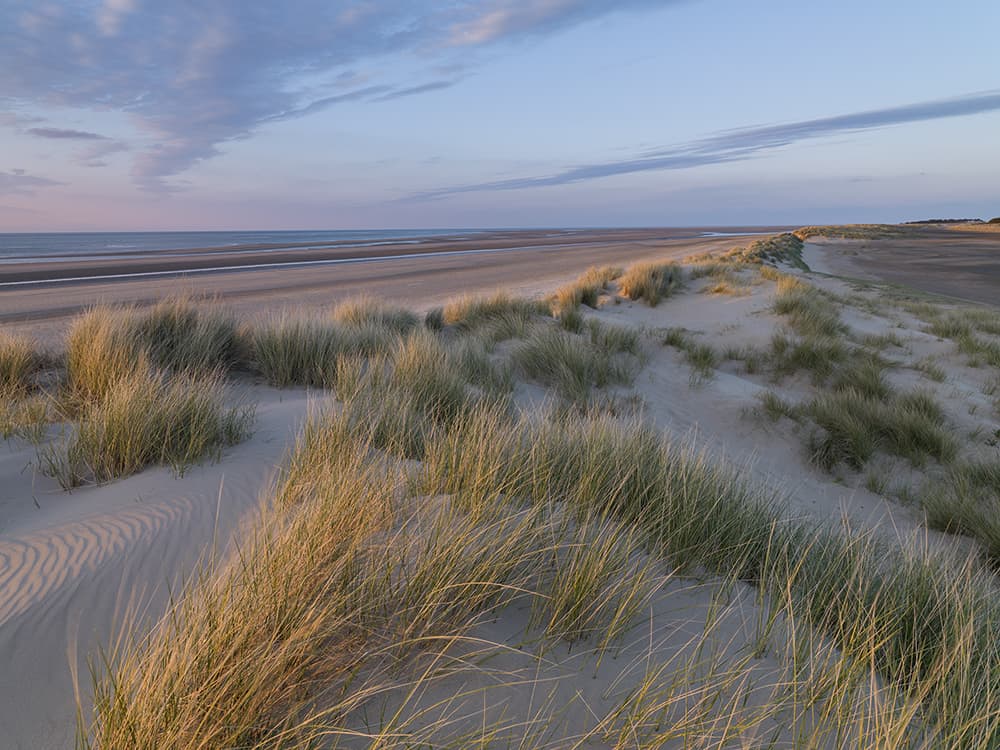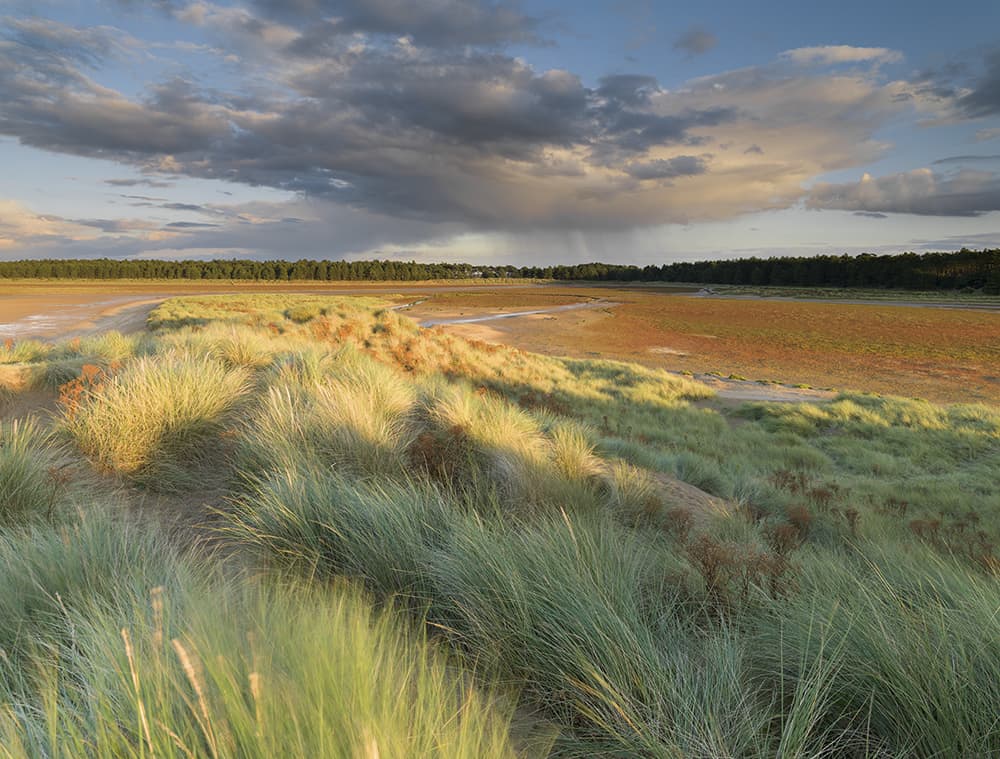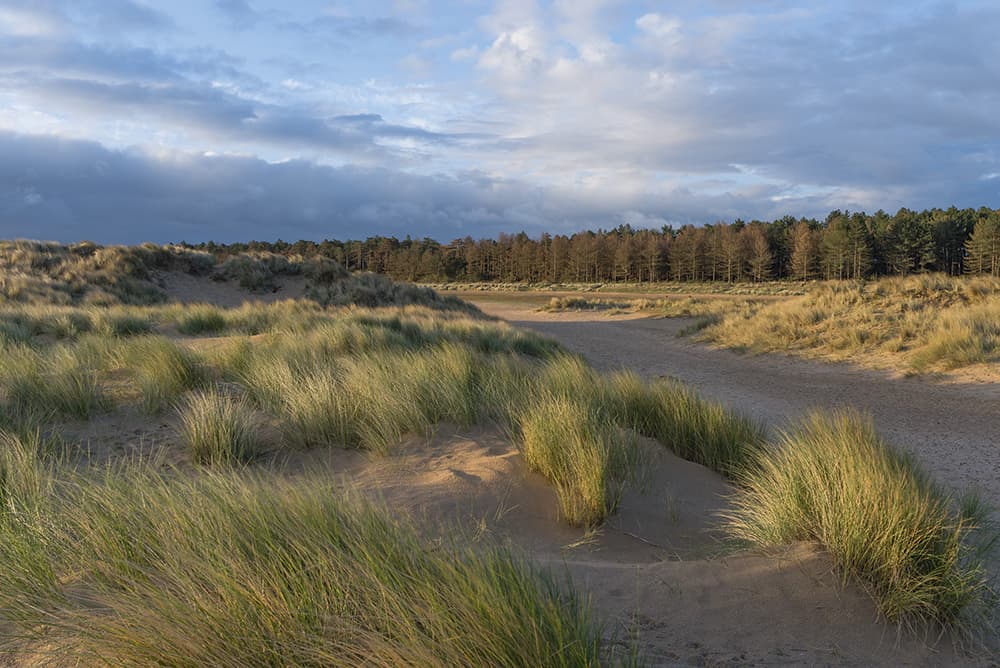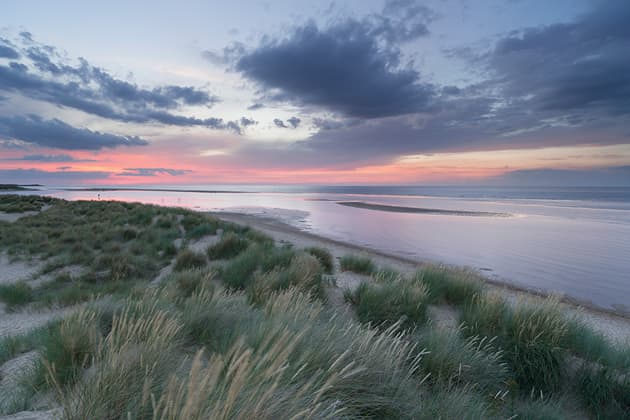
It is not unusual to find the beach empty at the beginning or end of the day. All photos by Jon Gibbs
Holkham Bay is a stunning area of the north Norfolk coast and is part of the Holkham National Nature Reserve. Its incredibly varied landscape includes huge expanses of sand, beautiful dune systems, marshland, saltmarshes and woodland. Aside from opportunities for landscape photography, the whole area is a haven for wildlife. Summer brings colonies of terns and winter sees pink-footed geese flying over the bay at the end of the day. It is also common to see barn owls and even marsh harriers at the nearby marshes.
There are three possible parking places for access to Holkham Bay. The easiest is in the village of Holkham at the Lady Anne’s Drive car park, which is a lovely tree-lined avenue. The entrance to the car park is on the coastal A149 just a short drive west from Wells-next-the-Sea. The bay is also accessible from the beach car park in Wells-next-the-Sea and from the village of Burnham Overy Staithe, but this involves a fairly long walk.
Parking at Lady Anne’s Drive gives you access to the wide view of Holkham Gap, a stunning semi-circular bay. If you use the car park at Wells-next-the-Sea you can visit the famous colourful beach huts before heading towards the bay. Parking at Burnham Overy Staithe involves a walk beside Burnham Harbour before you reach the nature reserve’s highest dunes that have marvellous views in all directions. It is well worth trying all these alternatives for their different aspects.

First or last light is the best time of day to shoot such expansive vistas
Shooting advice
Time to visit
Holkham Bay is an all-year-round location, but for me it is at its most beautiful in autumn and winter when it has a real sense of wildness.
In summer a wonderful carpet of sea lavender appears on the saltmarshes, but at that time of year the bay can be very busy with visitors.
First or last light is the best time of day to shoot, and on a stormy winter day look for opportunities in the woodland, such as the incredible twisted shapes of some of the pine trees.
If you can plan a visit with a high tide you may see Holkham Gap fill with tidal waters, which is an incredible sight, but do respect the tide – it is easy to position yourself on top of the dunes to watch and then find yourself cut off.
Such an expansive area can be a challenge to photograph successfully; you can be so easily be bewildered by the possibilities and sense of space. I have found that positioning myself on the dunes gives me much-needed height that delivers fabulous wide vista compositions.

The subtle colours of the Holkham National Nature Reserve in Norfolk
Food and lodging
Wells-next-the-Sea has a large selection of accommodation, including guesthouses, B&Bs, campsites and caravan parks. It also has a wonderful selection of pubs, cafés and restaurants, and is an ideal base for visiting the bay and the whole stretch of the north Norfolk coast.
The Victoria Inn in Holkham is situated just opposite the entrance to the Lady Anne’s Drive car park and offers accommodation and meals. Visit www.holkham.co.uk for more information about the area.

The pine woodland was planted to stabilise the dunes and it offers superb photographic opportunities
Kit list
Wellies
The bay can get very muddy, especially at Holkham Gap, and there are sometimes small channels to cross, depending on the amount of water left after the tide recedes.
Tide tables
Be aware of the tide times. In some parts of the bay it can be very easy to be cut off by the tide. It is safe because you can wait it out on top of the dunes, but walking back through the rising water is dangerous due to the undulating nature of the marshes and channels.
Jon Gibbs is an award-winning landscape photographer and gallery owner based in Norfolk. See his website for further details www.jon-gibbs.co.uk








